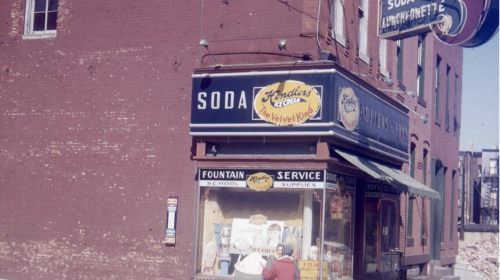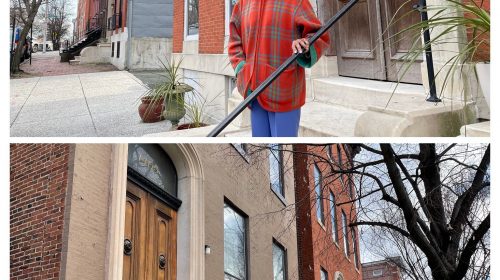
What’s the oldest house in Bolton Hill?
What’s the oldest house in Bolton Hill? Most sources will tell you it’s the cottage at the northwest corner of Lanvale and Bolton streets, but those claims may not have been entirely accurate.

What’s the oldest house in Bolton Hill? Most sources will tell you it’s the cottage at the northwest corner of Lanvale and Bolton streets, but those claims may not have been entirely accurate.

This month we are lucky to have several new photos to share, showing Bolton Hill during its “urban renewal” period in the mid-20th century. R. Julian Roszel, Jr. was a president of one of the earlier iterations of the neighborhood association then — instrumental in getting the John Street Park created in 1955. Before the wrecking ball hit several blocks of houses, he had the forethought to grab his camera and snap photographs.

As I walked around Bolton Hill and read all the blue historical plaques on homes identifying former residents, I was motivated to do research on who had owned the house I live in at 1526 W Mount Royal Ave. before it was converted to apartments. Interesting tile work around the fireplaces got me curious as to what inspired a resident to select that design.

At an April get-together, a neighbor mentioned historic artifacts hiding in plain sight on a curb near the northeastern edge of the neighborhood. According to the preservation agency CHAP, the east side of Mt. Royal Avenue isn’t considered part of Bolton Hill; I don’t know what other neighborhood it would belong to. According to the official Live Baltimore neighborhoods map, it’s in-bounds, Bolton Hill proper. I went to investigate.

Spring has arrived at Fitzgerald Park at Bolton and Wilson streets. Grass is growing, flowers are blooming, dog walkers congregate with mothers with strollers. Few remember when, before the park was developed in the 1970s to honor F. Scott Fitzgerald, there was a thriving Jewish synagogue, and more recently a Baptist church visited by Dr. Martin Luther King, at that site.

Bolton Hill’s Eutaw Place has an important anniversary this month: it was on March 19, 1853, that Baltimore’s city council passed an ordinance authorizing the mayor to accept from Henry Tiffany the deed for land now in the 1200 and 1300 blocks of Eutaw Place, to create what was then to be called “Eutaw Square.”

Bolton Hill resident and amateur historian Kevin Cross started pulling at a string of newspaper searches, old books and other historical archives earlier this year, poking around for neighborhood history. As with sweaters, the unraveling string became longer. The result in 2025 will be a new, open section of the BHCA website devoted to stories conveying the history of Bolton Hill, its early residents and builders, parks and architecture and more.

The Bolton Swim and Tennis Club is turning 50 in 2024. This is part of the history of the club, how it was founded, how it struggled, and how it grew to its current size. It is based on interviews with club members, former and current, on newspaper stories and on club records.

Look up and down the stretch of Eutaw Place that forms Bolton Hill’s southeastern boundary today and you’ll still see gorgeous old brick and brownstone mansions – mostly well-kept and owner-occupied. Many of the city’s most prominent and wealthy professional and mercantile families once resided in the houses along the 1300 to 1800 blocks, from not long after the Civil War until the early 20th Century, when they moved out to Roland Park and beyond

There are only a handful of gazebos scattered about Greater Baltimore. One of the older ones is on Linden Avenue, just south of Sumpter Park. But how did it come to be located smack dab in the middle of the brick roadway, blocked off to through traffic? Your intrepid reporter found the answer in Fells Point.